In the 1920s, pilots of the Royal Air Force flying over the deserts of Israel, Jordan and Egypt saw strange line shapes in the ground that they named “Desert Kites” because their outlines, as seen from the air, reminded them of airborne kites. It was the first time the white men had seen these mysterious figures, although the local Bedouin knew them for thousands of years. They called them “Works of the Old Men”. Since the discovery, thousands of desert kites have been identified distributed throughout the Arabian and Sinai peninsulas and as far northward as southeastern Turkey.
Desert kites consist of two low dry-stone walls, of variable thickness and height, that begin far apart and gradually move closer to create a V or funnel shape. The narrow opening at the end of the funnel leads to a circular enclosure or a pit. The enclosure can range from a few meters to a hundred meters in diameter and the walls may extend for hundreds of meters and even several kilometers. Their shape and archeological evidence suggest that these extensive stone structures may have functioned as game traps, designed to capture and kill large numbers of wild animals.
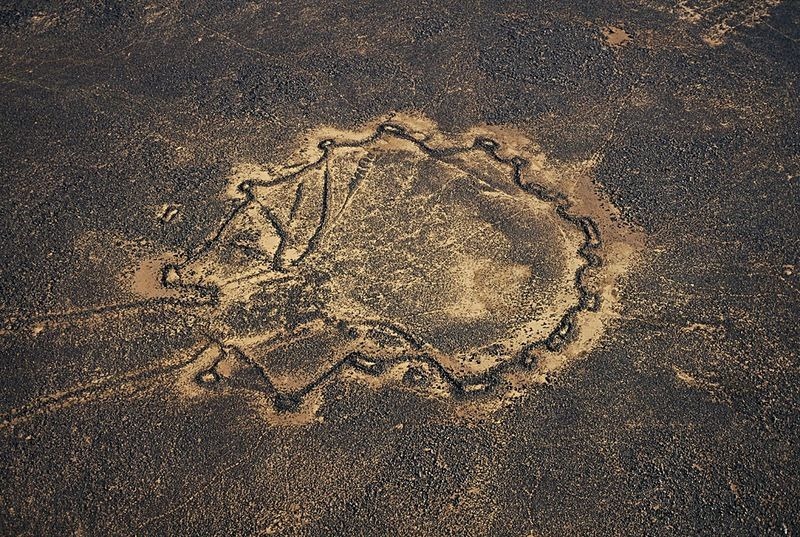
Remains of an ancient desert kite between As Safawi and Qasr Burqu, Mafraq, Jordan. Photo credit
Archaeologists had long suspected that these mysterious funnel shaped structures were used in the hunting of game animals, primarily gazelle, but as recently as 2011, none of the structures examined had produced any archaeological evidence of animals killed. Four years ago, a team of archeologists from Israel and the U.S. discovered a remarkable deposit of bones of Persian gazelle from fourth millennium BCE from a site in northeastern Syria that provides direct evidence of the use of kites for hunting gazelle in post-Neolithic times.
Most desert kites were built between 4000 BCE to 2000 BCE but some of these structures could be dated as far back as 8000 BCE. Like Buffalo Jumps, desert kites were generally built where the natural environment helped the hunting effort. The land had to be flat and between narrow deeply incised gullies or wadis. Some kites used pits, between 6 and 15 meters deep, instead of enclosures, and a ramp leading gently upward was constructed to increase the drop-off at the end. The upward slope also prevented the animals from gaining enough speed to leap out of the pit and over the enclosure. Some stone walls were built into small cells so that animals couldn’t get out.
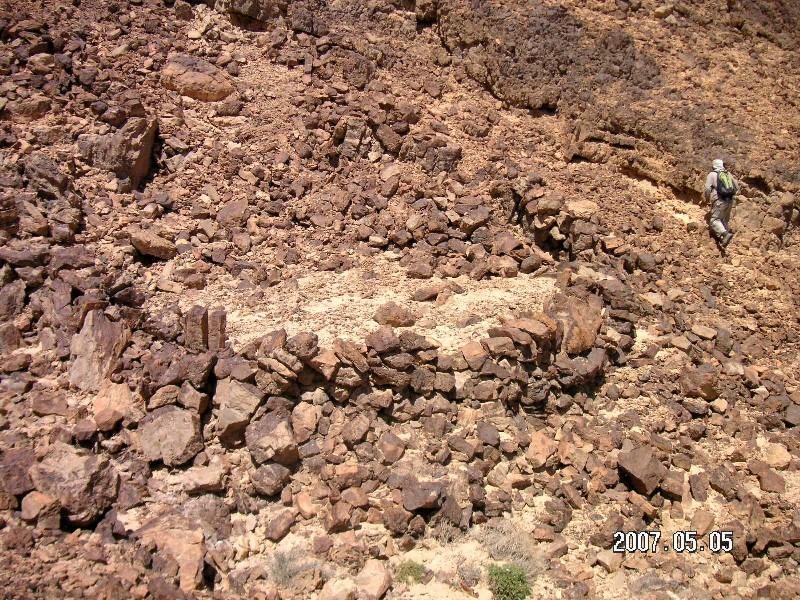
A desert kite in Wadi Eshel. Photo credit
A group of hunters would chase or herd large game animals into the wide end and then chase them down the funnel to the narrow end where they would be trapped in a pit or stone enclosure and easily slaughtered en masse. Hunting and processing these animals must have involved a large number of people. Kites had to be constructed and maintained and migrating animals had to located and then be driven into the kites by people where hunters were waiting to slaughter them. Then the carcasses had to be skinned and the meat transported back to their settlement.
Indiscriminate hunting of gazelle with modern firearms continued well into the nineteenth and early twentieth centuries. Once one of the most common wild ungulates in the Levant, the goitered gazelle is now a threatened species that exist only as remnant populations in protected areas.

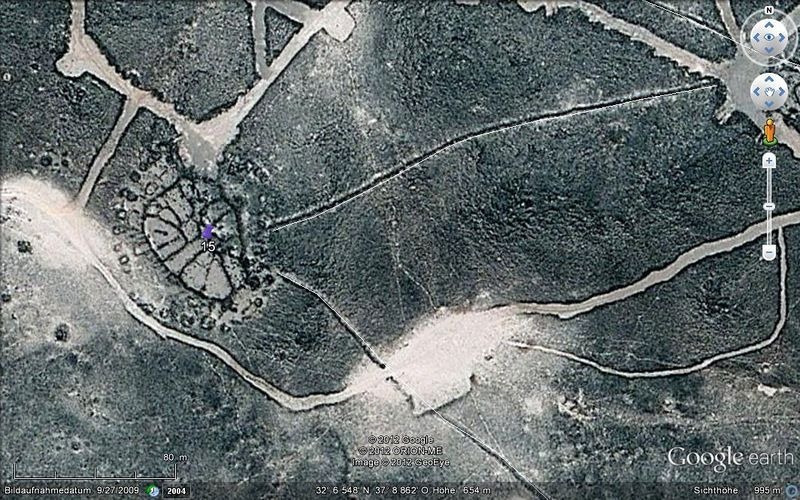
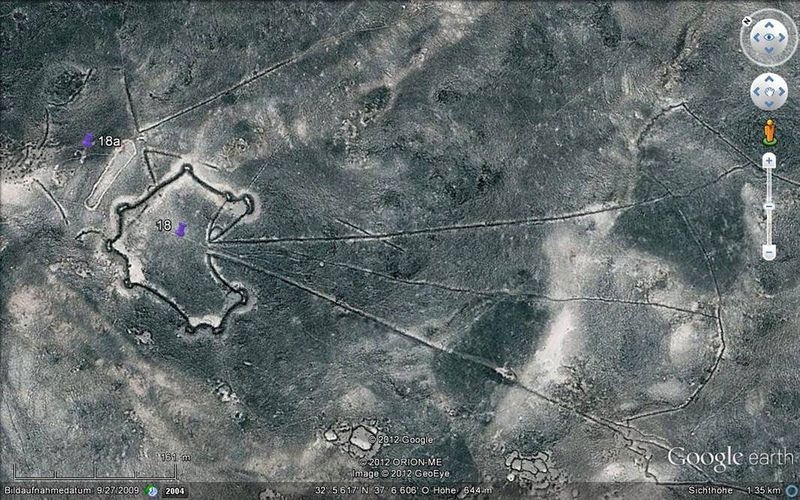
A desert kite in the Jordanian Harrat showing very long stone walls. Photo credit

The stone walls of a desert kite. Photo credit
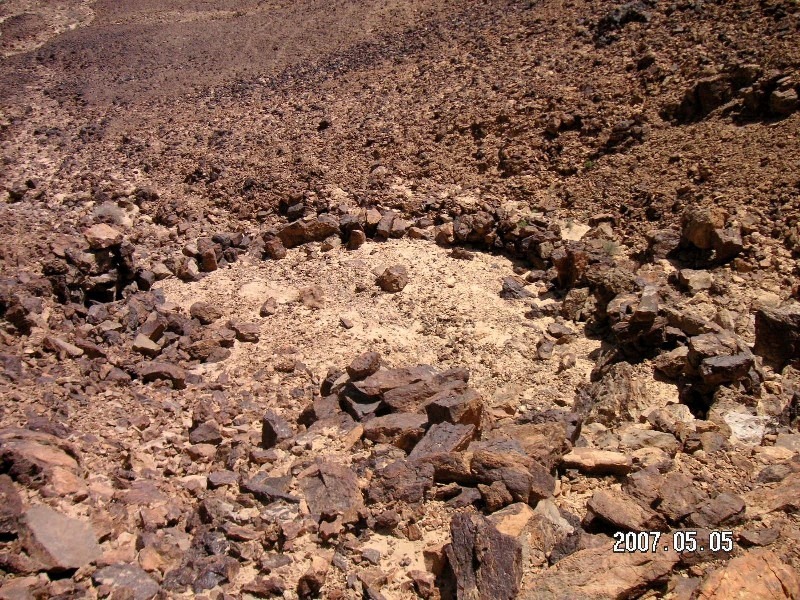
A desert kite in Wadi Eshel. Photo credit
Sources: National Geographic / About.com / PNAS / Wikipedia



Comments
Post a Comment